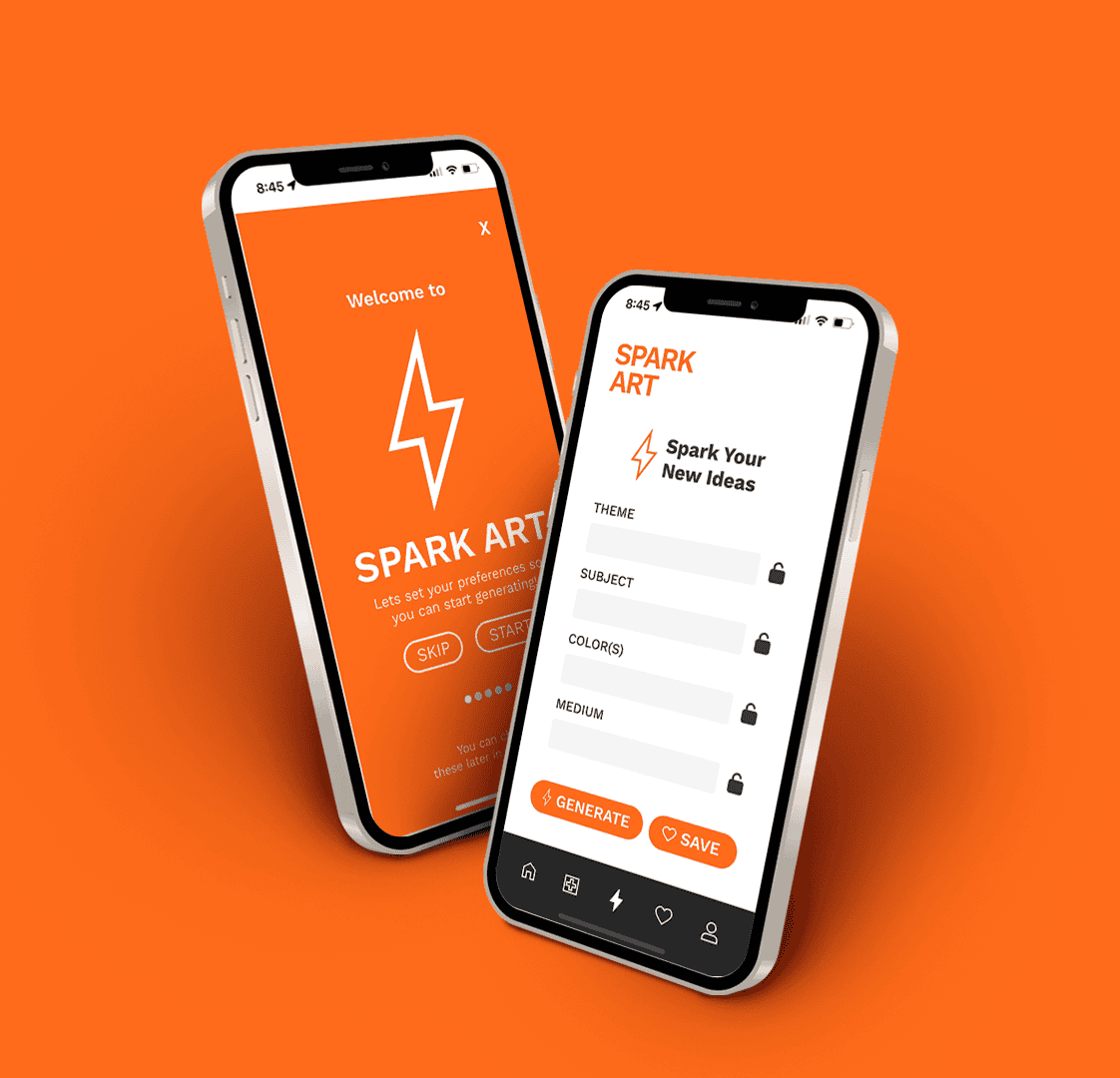
A UX Case Study by Lauren Shelley
SPARK
ART
ROLE UX Designer DURATION 6 Weeks CLIENT Personal Project
OVERVIEW
Never know where to start?
through shared creative challenges.
The app provides users with daily art prompts, encouraging them to use new techniques, mediums, and ideas. Once completed, users can share their artwork on their profile for other artists to see. This way, they can give and receive good feedback on their technique and connect with artists they love!
PROBLEM
Many artists struggle with creative block or find themselves in need of fresh inspiration. Existing social platforms are vast, but lack focused, community-driven prompts that encourage artists to explore and interact with eachother. This app addresses this gap by providing structured challenges so artists can be inspired and share their work with others.
COMPETITOR RESEARCH
What we got.
Below is some research i conducted on other apps that are similar to the app i am designing.
SKETCH A DAY
Design: The app has a very clean interface, but it feels overly simple and empty. The user experience could be improved with a more intuitive design that highlights the app’s goals and functionality.
Functionality: Offers a great user experience overall.
Goal: To share and inspire creativity.
Process: Each day, the app generates a single prompt for all users. Users can create a sketch based on the prompt and post it under the medium they used. You can also reference prompts from previous days. However, it’s unclear how and where to post your sketches. Additionally, you can only post sketches up to three days after the prompt is issued. Upgrading to a paid subscription ($3.49/month) unlocks features like building a portfolio and accessing chat functionality.
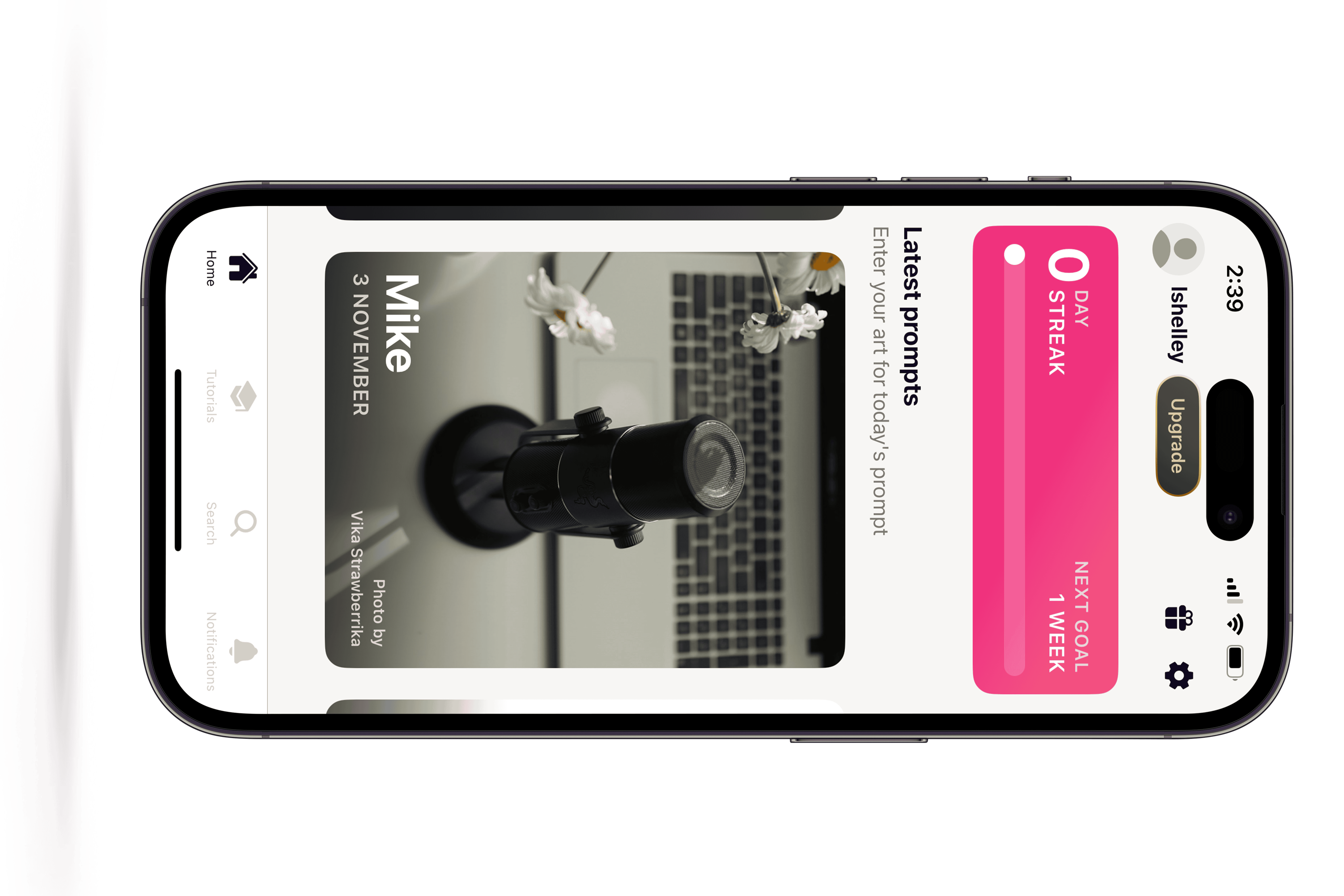
CREO
Design: Features bright and vibrant colors.
Functionality: Lacks good functionality and has poor UX design, making it challenging to use effectively.
Goal: To generate subjects for your chosen categories and provide an option to share your work.
Process: The app’s process is unclear. It consists of a single page where users can select up to three categories in the regular version or six with an upgraded version. There’s no user profile, and it’s not obvious how to view saved prompts. The app is adult-friendly but could benefit from better organization and clearer navigation.
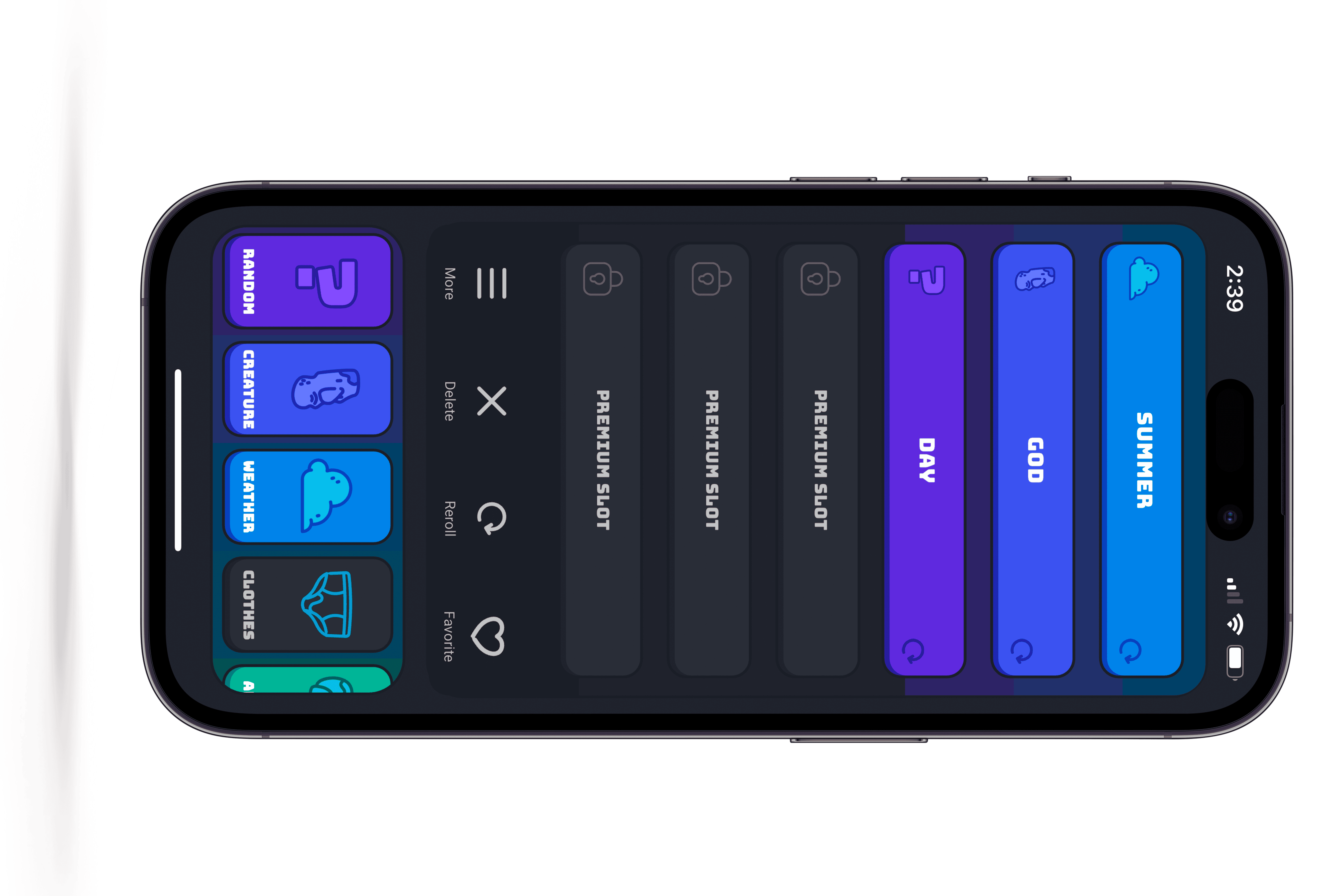
ETHNOGRAPHIC RESEARCH
What I found.
RESEARCH OVERVIEW.
To understand how artists and designers generate ideas, overcome creative blocks, and stay inspired, I conducted interviews with art/design students and professional creatives. I also gathered demographic information, such as age, gender, and occupation, to add context to their responses (5).
KEY QUESTIONS AND THEIR PURPOSE
Here are some of the questions i asked during the interview process.
Do you consider yourself an artist or designer?
This question helped determine how individuals perceive their creative identity, whether they identify as artists, designers, or both (1).
How do you come up with ideas for your next art project?
By asking this, I aimed to understand the tools, strategies, or habits that creatives use to generate new ideas and concepts (2).
Do you ever experience art block or feel stuck on what to do next for your project? If so, what do you do?
This question focused on identifying the common struggles creatives face and uncovering the strategies they use to overcome creative blocks (3).
What is your experience using an idea generator? Would you use one if it became available to you?
This explored their willingness to use tools such as idea generators or curated prompts to help spark creativity (4).
RESULT SUMMARY
Identity as Creatives: Every interviewee considered themselves either an artist, a designer, or both, showing that creative identity plays a key role in how they approach their craft (1). Generating Ideas: Participants shared various ways they come up with ideas for new projects. Common approaches included:-
- Browsing others’ work through portfolios, social media, or galleries to draw inspiration (2, 4).
- Searching for external prompts or Googling for ideas (2, 4).
- Applying creative restrictions, such as limiting their tools, color palettes, or mediums, to force innovation (4).
Experiencing Creative Blocks: Every participant admitted to facing art blocks at some point in their career, regardless of their experience level. This finding reinforces that creative struggles are universal (3, 5). Overcoming Art Blocks: While individual approaches varied, there were clear patterns among participants:
- Taking Breaks: Stepping away from their work to recharge and return with fresh eyes (3).
- Looking at Others’ Work: Exploring other artists’ or designers’ work online or in person to find inspiration (2, 4).
- Using Prompts or Challenges: Actively seeking art prompts or constraints to jump-start the creative process (4).
TASKS BASED ON RESEARCH
- Develop a platform or tool that provides structured prompts, curated challenges, or idea generators to help creatives overcome art blocks (4).
- Streamline access to inspirational content, such as portfolios, social media galleries, or prompts, in a user-friendly format (2, 4).
- Offer actionable strategies for navigating creative blocks, such as applying creative constraints or using break/recharge methods (3, 4).
PERSONA
Target Audience.
Based on the information gathered in my ethnographic research, here is a persona of SPARK ARTS target audience.

Graphic Design Major
Name: Emma Jones
Age: 22
Gender: Female
Education: Junior, Bachelor's Degree in Art with an Emphesis in Graphic Design
“When I’m stuck creatively, I need simple tools and strategies to help me find a spark and get back to creating.”
BACKGROUND
Emma is a 22-year-old freelance illustrator who works on commission-based projects while finishing her degree in Graphic Design. She considers herself both an artist and designer (1). Emma is passionate about creating unique visuals for her clients, but like many in the creative industry, she regularly experiences creative blocks (3). These struggles, while frustrating, are common among both students and professional artists (5). Emma often seeks ways to stay inspired, relying on structured tools and techniques that align with broader habits among creatives, such as searching for prompts or browsing for inspiration online (4).
FRUSTRATIONS
- Creative Blocks: Emma, like every creative in your research, admits to hitting periods where she feels stuck and uninspired (5).
- Overwhelm When Starting New Projects: Without clear direction, Emma struggles to transition from idea generation to execution.
- Access to Tools: While she searches for inspiration on her own, Emma would benefit from a streamlined platform offering prompts, challenges, or constraints (4).
KEY NEEDS
- Tools that provide structured inspiration, such as idea generators, curated challenges, or prompts (4).
- Access to sources of inspiration (like art galleries, portfolios, or social platforms) in a streamlined and user-friendly format (4).
- Techniques to help navigate and overcome creative blocks effectively, tailored to the habits and strategies already used by artists and designers (3).
GOALS AND MOTIVATIONS
- To consistently generate fresh ideas for art and design projects (2).
- To overcome creative blocks quickly using proven strategies and tools (3).
- To access easy-to-use resources that provide structure and actionable inspiration, such as idea generators or curated prompts (4).
SKILLS:
- Proficient in tools like Adobe Illustrator, Photoshop, and Procreate for digital design.
- Skilled at applying creative constraints (4), such as limited color palettes or mediums, to push her ideas forward.
- Effective at seeking outside inspiration, such as exploring portfolios, social media, galleries, or even Googling ideas (4).
SCENARIOS
What exactly am i testing?
Based on my ethnographic research and persona here are three scenarios that I am going to create a prototype to better the users expereince. I will then conduct user testing on my prototype for these scenarios to end with a refined product that helps artists feel inspired.
1
Set preferences through onboarding screens
You are an artist/designer who is feeling overwhelmed and uninspired for your next art piece. You found and downloaded the app ‘Spark Art’, which generates an art prompt that will inspire you to start your next project by giving you ideas of what to create and how to create it!
You have logged in for the first time and created an account. The app then prompts you to set up your preferred preferences.
You like to paint with oils, love music and want to connect with other artists.
Task – Set your preferences.
2
Generate and save your prompt
After setting your preferences through the onboarding screens you are now ready to generate your first prompt!
Task 1 – Generate your first prompt
It generated an idea that doesn’t inspire you. What would you do now?
Task 2 – You have found a prompt you would like to use and remember it for later.
How would you remember that prompt?
3
Share your work from your saved prompt
You have finished your art piece and you are ready to share it with the spark art community.
Task 1 – Share your piece.
User Testing
The real world.
Now to test the theory.
User testing is critical when creating a good product! I set out and conducted user testing through each phase of my building process. While i conducted research for each scenario, you will see my prototype for scenario 1 in this case study and the user feedback I received. I will walk you though my paper prototype, digital wireframes, low fidelity, high fidelity and the final product.
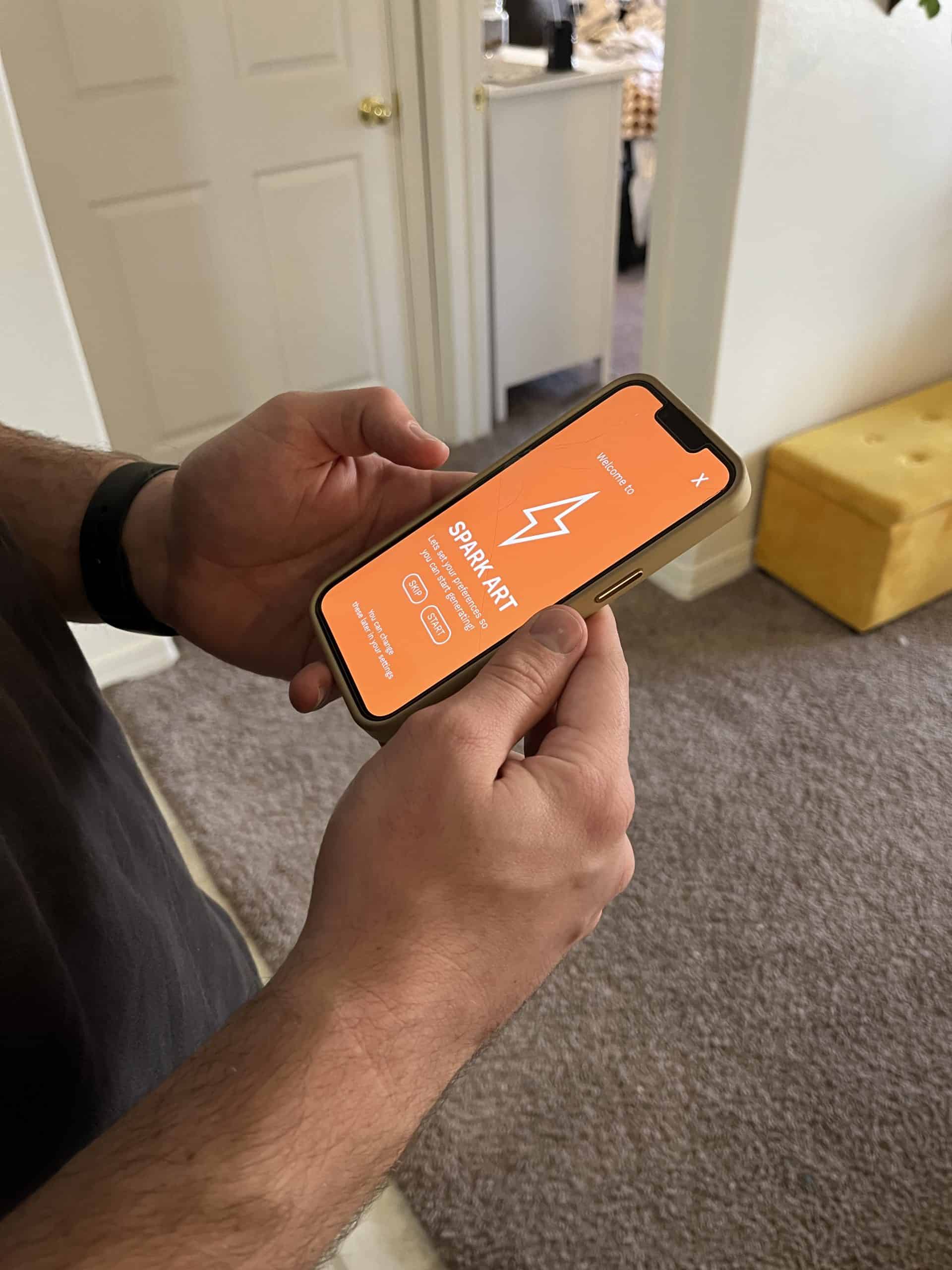
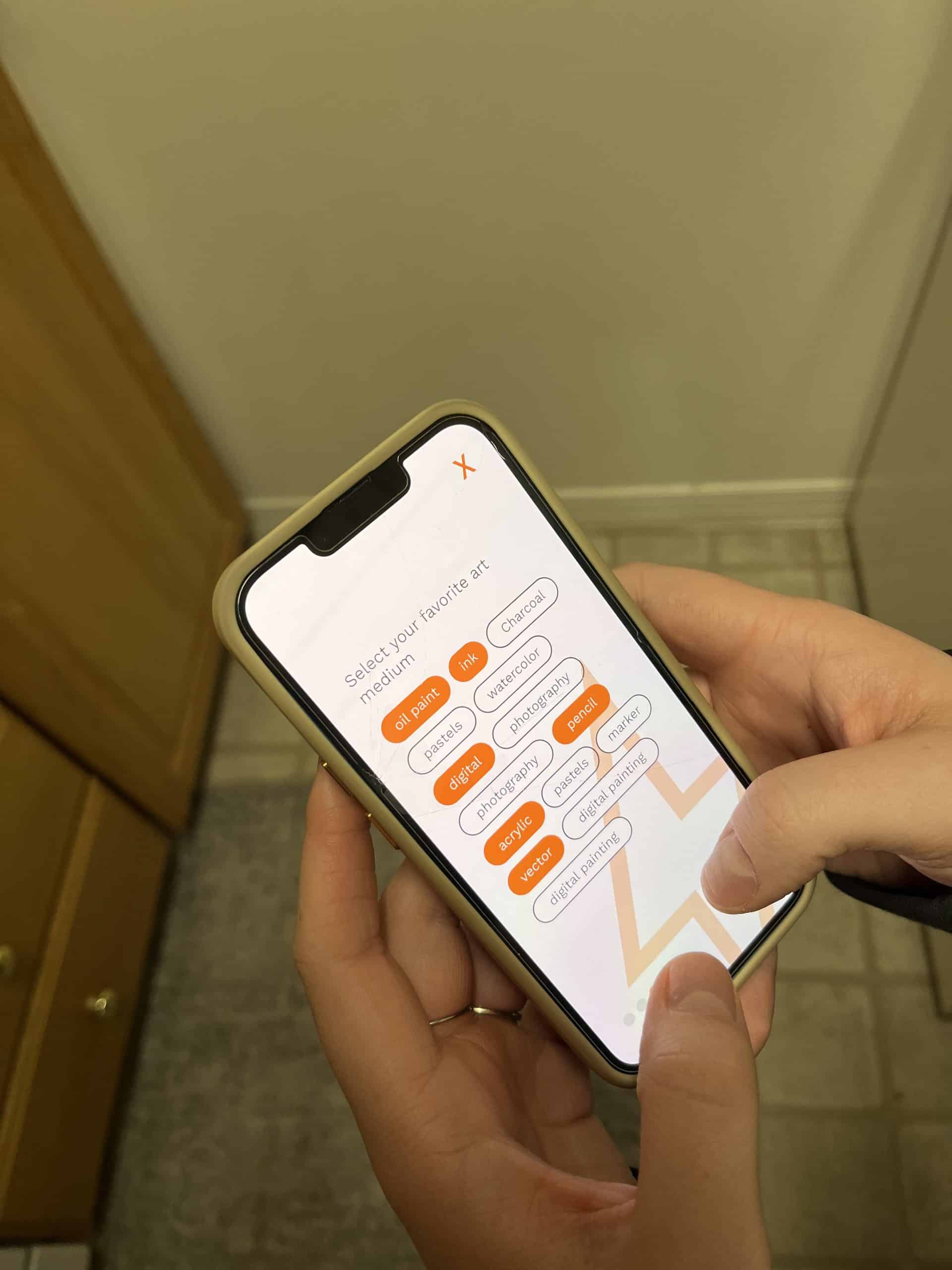
PAPER PROTOTYPE
The draft.
Where to start?
To the right you can see one of my paper prototypes for the homescreen. Here the user can generate their prompts! (scenario 2)
Below is my paper prototype that goes through the process a new user would go through when they first download the app. (Scenario 1)
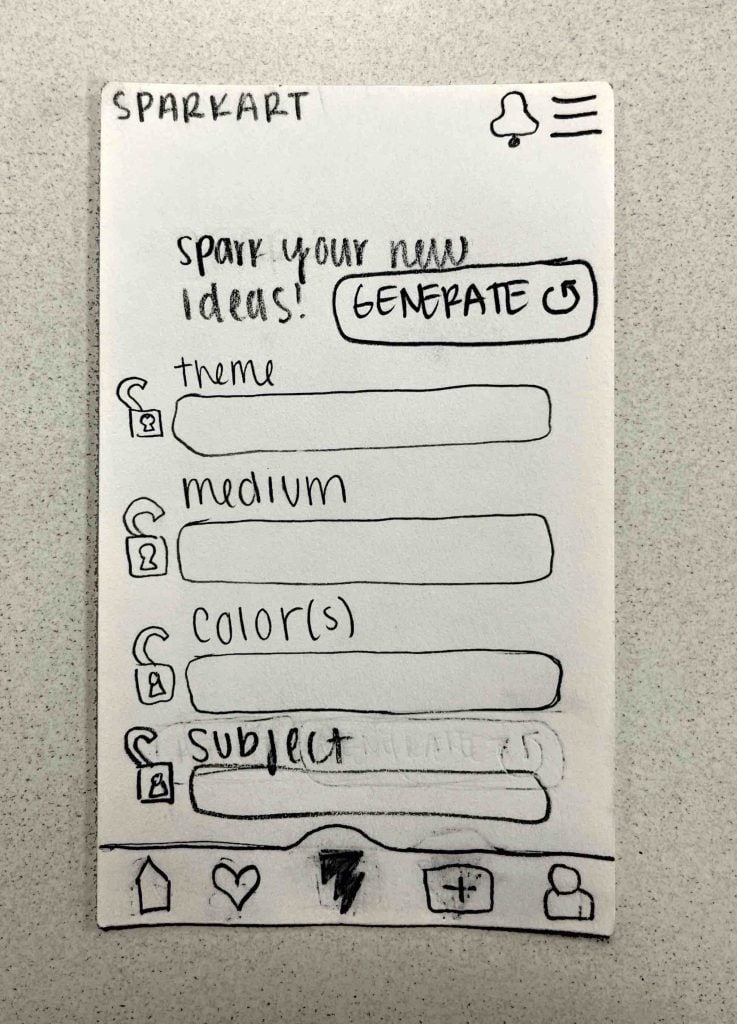
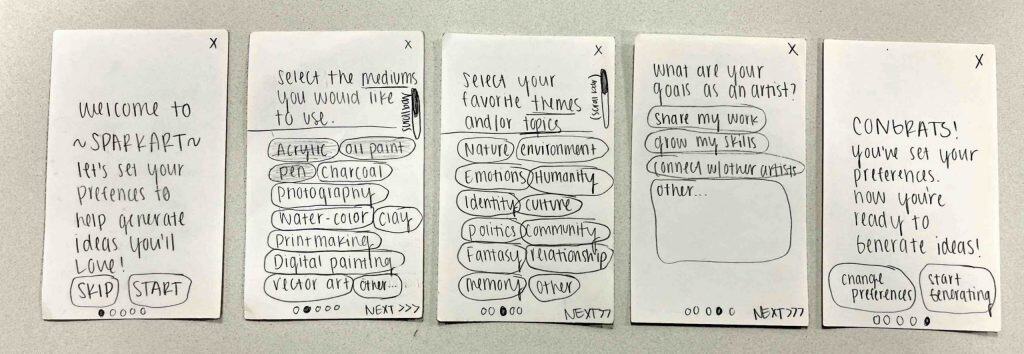
User Testing.
Feedback
To test my paper prototype I conducted user testing with 10 people. Below are some points and feedback on my process.
- Add branding to the layout.
- Include a back button on each screen in case they want to edit their answer.
- Add ‘other’ option.
- Add disclaimer that they can be changed in settings later.
Figma Prototype wireframes
Going digital.
After applying my feedback from round one of user testing, my prototype is ready to go digital! Below are some of the top wireframes from my scenarios.


User Testing.
Feedback
To test my paper prototype I conducted user testing with 10 people. Below are some points and feedback on my process.
- Add the option to name the prompt you save
- Add an X icon to any full-screen options so there are multiple ways to exit the screen
- Add on click features to make interactions clear
Figma Prototype Low fidelity
Revised.
Next is implementing the brand styling and making it come to life! Below are some of my low-fidelity digital prototypes.


User Testing.
Feedback
To test my paper prototype I conducted user testing with 10 people. Below are some points and feedback on my process.
- Keep coloring consistent on each screen
- Add regular phone features to each screen.
- Keep features/layout consistent
- Add option to label/name saved prompt
High fedelity prototype
Final Design.
After completing various rounds of user testing and revisions, below is my final prototype!
Scenario 1
Set preferences through onboarding screens
You are an artist/designer who is feeling overwhelmed and uninspired for your next art piece. You found and downloaded the app ‘Spark Art’, which generates an art prompt that will inspire you to start your next project by giving you ideas of what to create and how to create it!
You have logged in for the first time and created an account. The app then prompts you to set up your preferred preferences.
You like to paint with oils, love music and want to connect with other artists.
Task – Set your preferences.
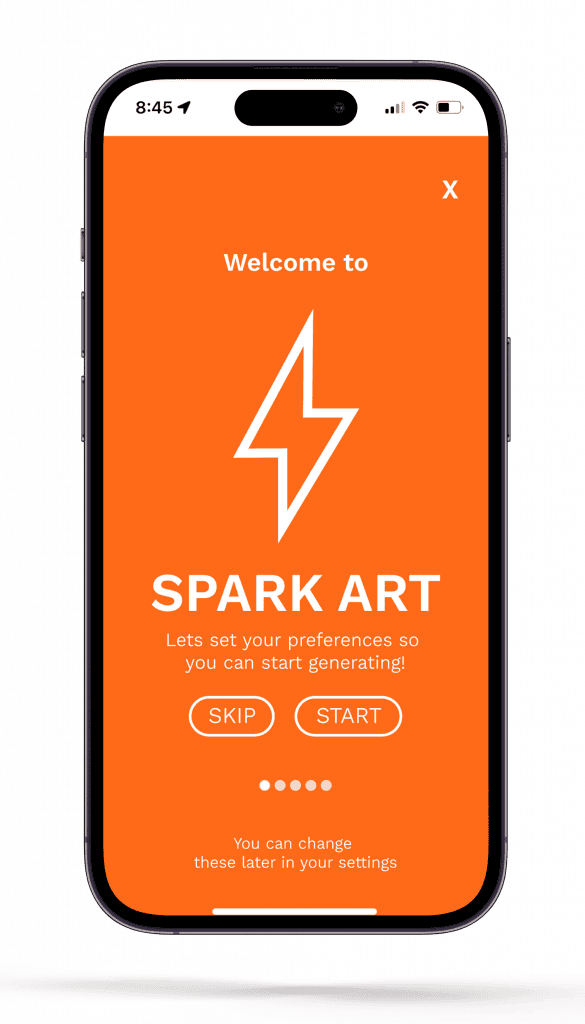
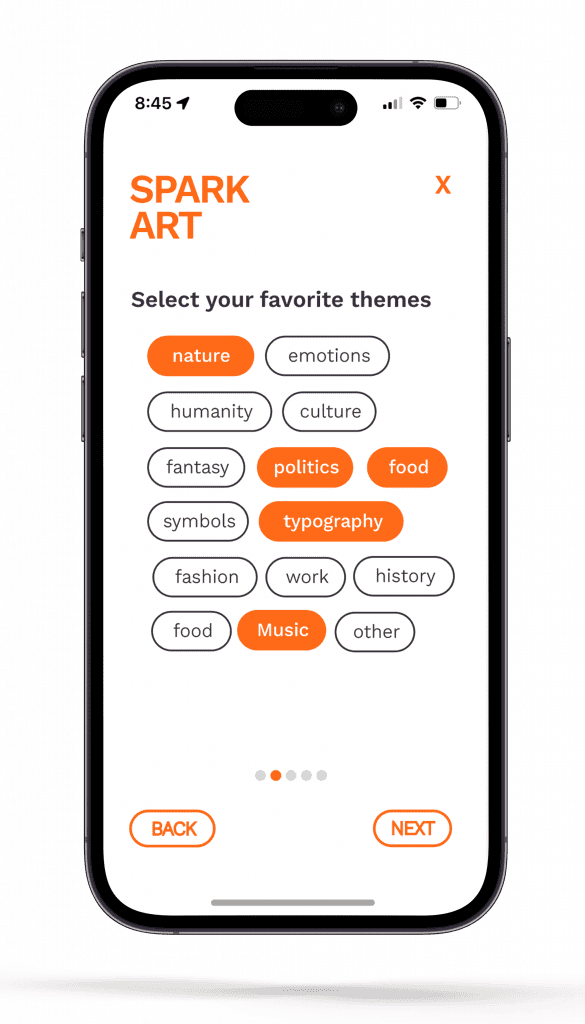
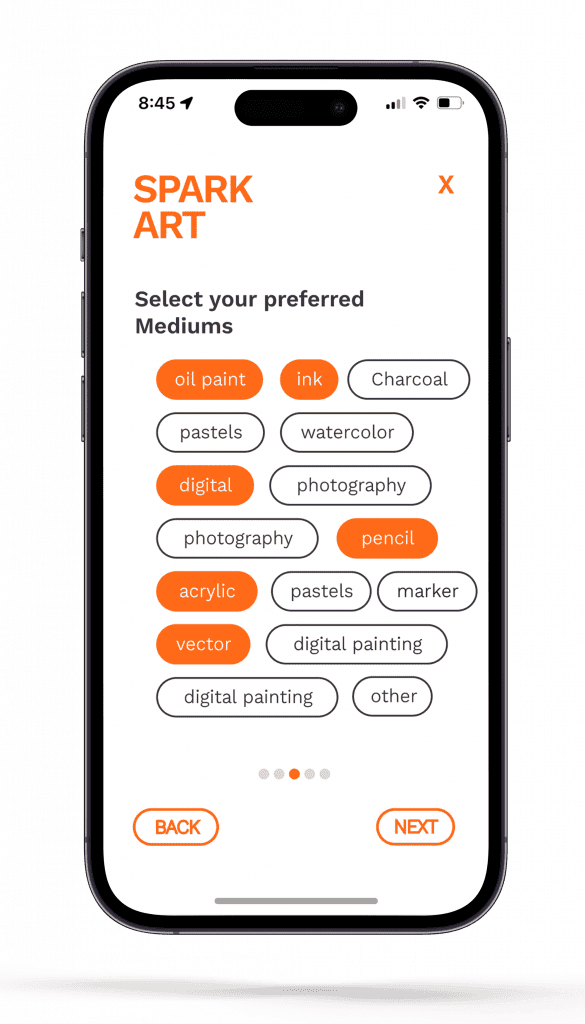
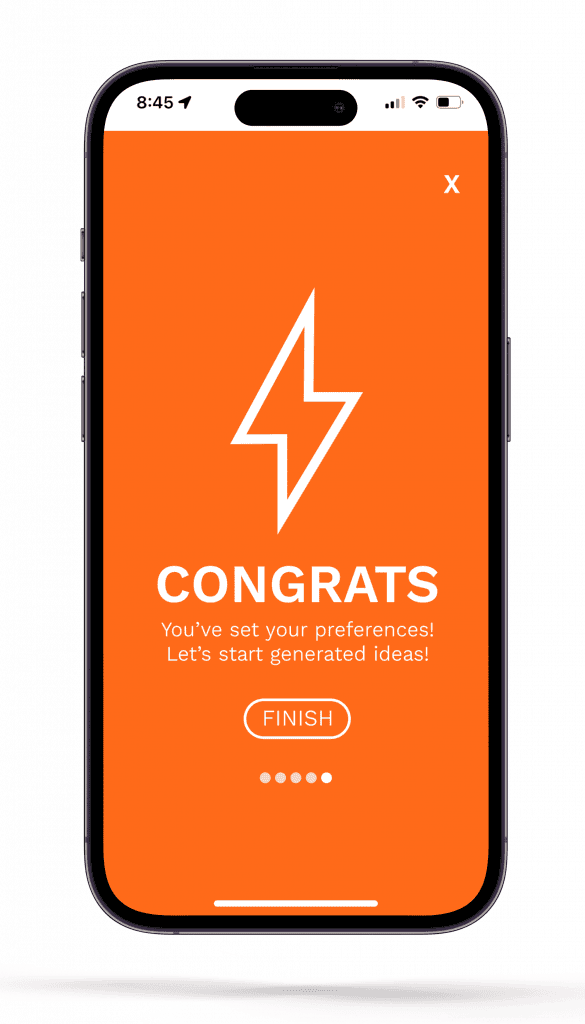
Scenario 2
Generate and save your prompt
After setting your preferences through the onboarding screens you are now ready to generate your first prompt!
Task 1 – Generate your first prompt
It generated an idea that doesn’t inspire you. What would you do now?
Task 2 – You have found a prompt you would like to use and remember it for later.
How would you remember that prompt?
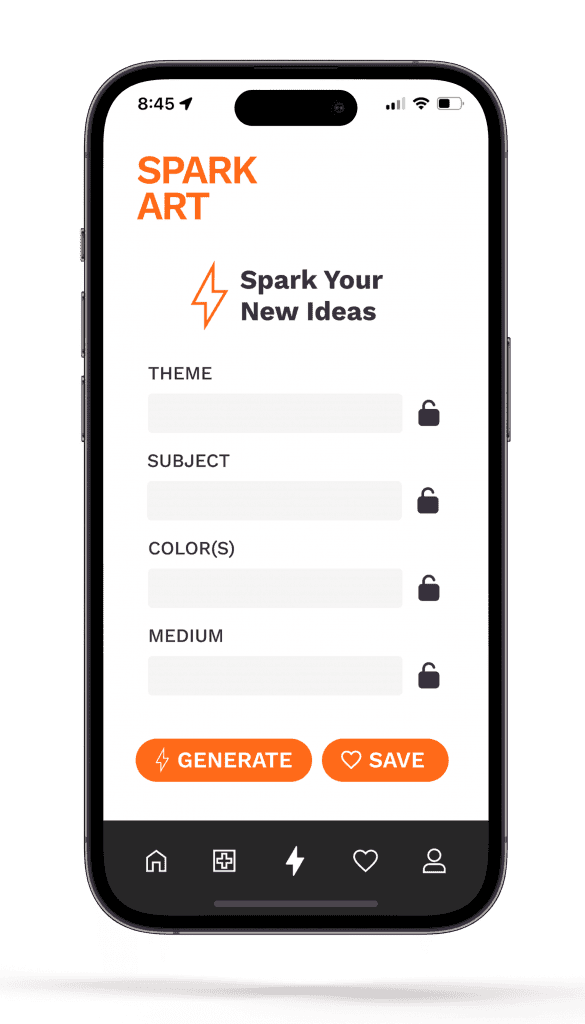
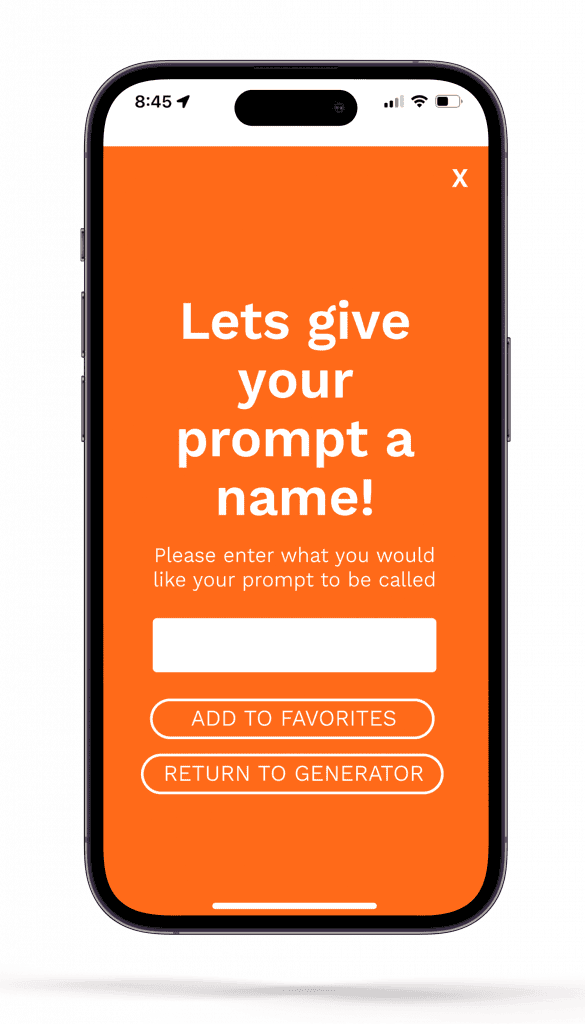
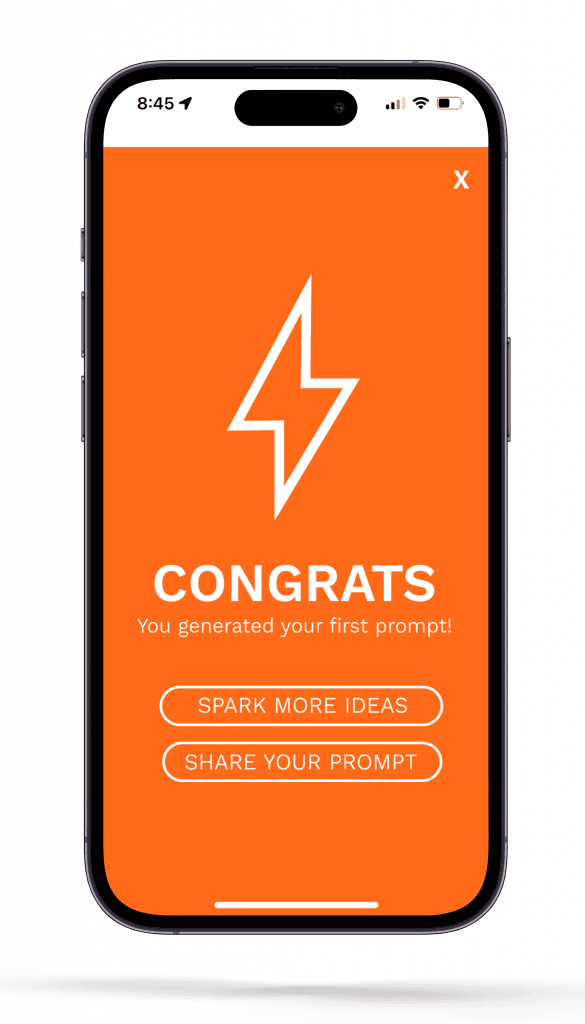
Scenario 3
Share your work from your saved prompt
You have finished your art piece and you are ready to share it with the spark art community.
Task 1 – Share your piece.
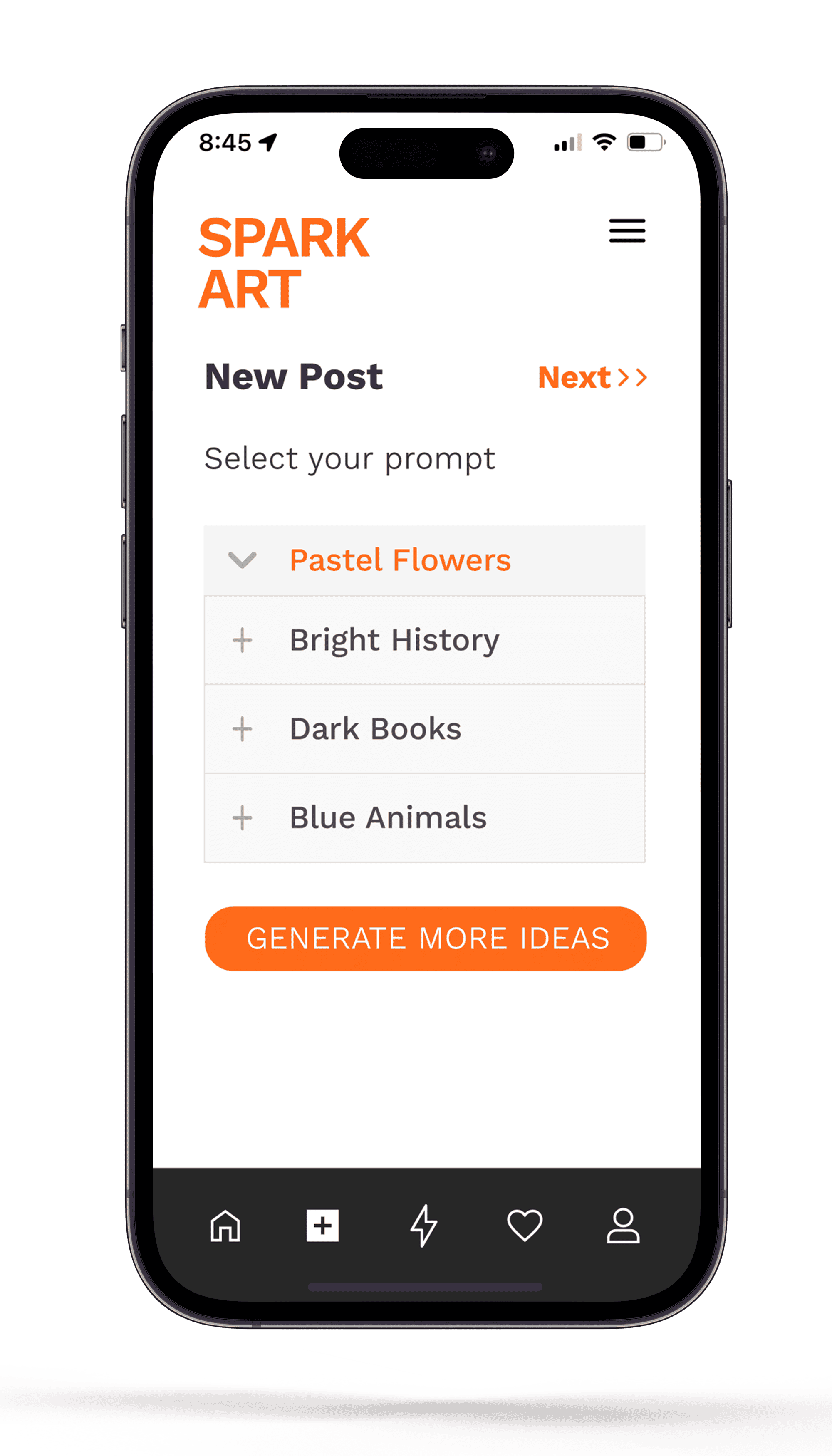
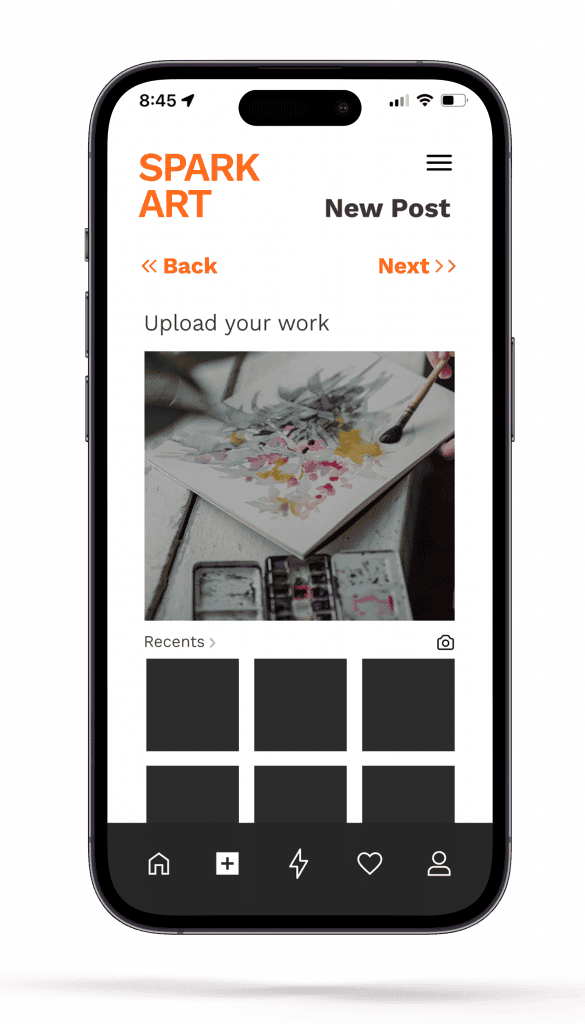
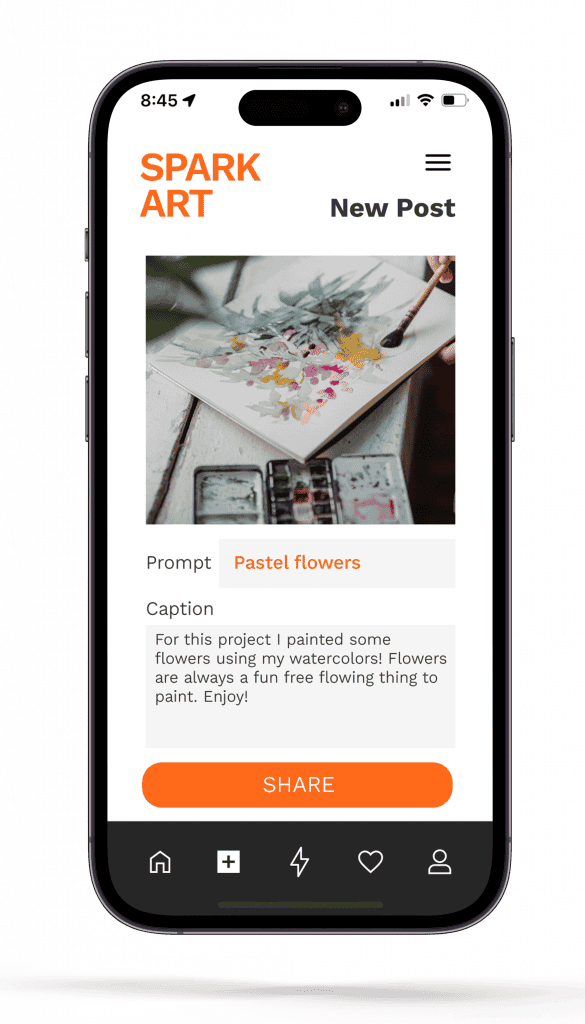
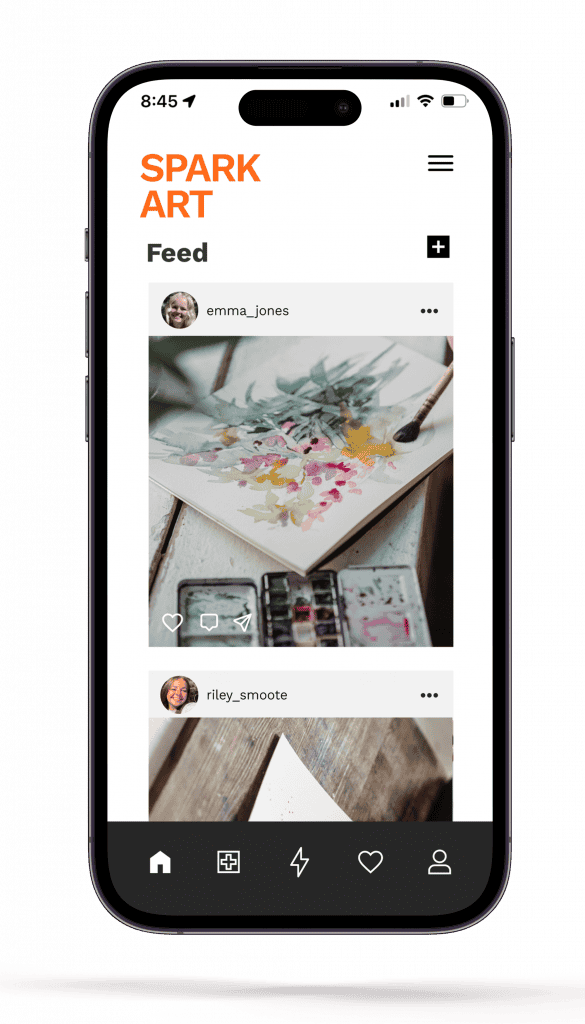
Walk Through.
Here is a walk through of my final figma prototype and the corresponding scenario.
Overview
So what?
Start up screen animation
Screenshots of each screen